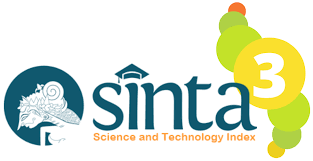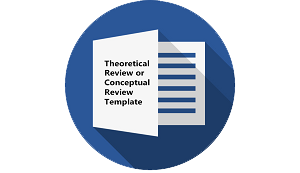A Smart Money: How Jargons Work as Persuasion Technique in Cryptocurrency Ecosystem
Smart Money: Bagaimana Jargon Berfungsi sebagai Teknik Persuasi dalam Ekosistem Cryptocurrency
DOI:
https://doi.org/10.30957/lingua.v21i1.897Keywords:
Jargon, Cryptocurrency, Persuasion, Platform X, LinguisticsAbstract
Cryptocurrency's hegemony as revolutionary breakthrough for the future financial transaction system prompts an examination of the role of jargon in persuasive techniques on social media platform X. The study aims to explore linguistics form of crypto jargon and recognize how jargon functions in persuasive techniques related to cryptocurrency on platform X. Focusing data on posts from crypto influencer @saylor and crypto exchange @binance, this study identifies 10 types of cryptocurrency jargon, highlighting the dominance of compounding. A new category, Visual Jargon is introduced, emphasizing visual elements like icons and logos, supported by GIF, image, and emoticon features on platform X. The study demonstrates the effectiveness of jargon in fostering group identity within the cryptocurrency ecosystem, as evidenced by survey results indicating over 90% agreement on its positive function as a symbol of membership and prestige. The hashtag feature on platform X facilitates connections among crypto enthusiasts. Semantically, connotative meaning of crypto jargon enables precise communication, reinforcing concept of identification within persuasive techniques. Grammatically, it introduces specific structures that accurately simplify communication. It aligns with the positive function of jargon in improving language efficiency, in accordance with the posting guidelines on platform X which are limited to only 280 characters. However, audience comments indicate potential lack of understandings among those outside crypto community.
Downloads
References
Belda-medina, J. (2016). Techno Jargon : Main Problems in the English- Spanish Translation of Computer and Internet Terminology. January 2004.
Boukes, M., & LaMarre, H. L. (2021). Narrative persuasion by corporate CSR messages: The impact of narrative richness on attitudes and behavioral intentions via character identification, transportation, and message credibility. Public Relations Review, 47(5), 102107. https://doi.org/10.1016/j.pubrev.2021.102107
Day, D. G. (1960). Persuasion and the concept of identification. Quarterly Journal of Speech, 46(3), 270–273. https://doi.org/10.1080/00335636009382421
Fang, Y., Zhang, Y., & Sun, Y. (2023). Trust or Doubt ? Understanding the Mechanisms of Jargon Use on Doubt from the Trust or Doubt ? Understanding the Mechanisms of Jargon Use on Doubt from the Source Credibility Perspective. July 2022.
George Yule. (2010). The Study of Language.
Id, H. C. S., & Bullock, O. M. (2020). Don ’ t dumb it down : The effects of jargon in COVID-19 crisis communication. 1–10. https://doi.org/10.1371/journal.pone.0239524
Karlygash, S. (2023). Features of word formation of new vocabulary in English. XLinguae, 16(1), 155–164. https://doi.org/10.18355/XL.2023.16.01.11
Mahesh Jayaweera. (2023). From Jargon to Clarity: Enhancing Science Communication with ChatGPT. Vidyodaya Journal of Science, 26(01), 1–4. https://doi.org/10.31357/vjs.v26i01.6405
Marina Kati. (2003). Terminology of e-commers. https://www.researchgate.net/publication/228954592
Martin, S. (2022). The Effects of Jargon on Processing Fluency,.
Masemola, M. K. (2021). Enter the jargon: the intertextual rhetoric of Radical Economic Transformation following the logic of Demosthenes’s oratory. African Identities, 19(2), 209–220. https://doi.org/10.1080/14725843.2020.1796589
Michele Zappavigna. (2012). Michele Zappavigna-Discourse of Twitter and Social Media_ How We Use Language to Create Affiliation on the Web-Continuum (2012) (pp. 1–195).
Mikhaylov, A. (2020). Cryptocurrency market analysis from the open innovation perspective. Journal of Open Innovation: Technology, Market, and Complexity, 6(4), 1–19. https://doi.org/10.3390/joitmc6040197
Oparaugo, B., Bello, L., Daji, D., Kawoh, S., & Shinkafi, U. A. (2020). Advertising As a Tool for Marketing and Persuasive Communication. 3(2), 1–7.
Park, I. (2008). The Study of Language (3rd ed.) by George Yule. Cambridge: Cambridge University Press, 2006, x+273 pp. Issues in Applied Linguistics, 16(2). https://doi.org/10.5070/l4162005099
Peng, W., Lim, S., & Meng, J. (2023). Persuasive strategies in online health misinformation: a systematic review. Information, Communication & Society, 26(11), 2131–2148. https://doi.org/10.1080/1369118X.2022.2085615
Shulman, H. C., Dixon, G. N., Bullock, O. M., & Colón Amill, D. (2020). The Effects of Jargon on Processing Fluency, Self-Perceptions, and Scientific Engagement. Journal of Language and Social Psychology, 39(5–6), 579–597. https://doi.org/10.1177/0261927X20902177
Spradley, J. P. (1980). Partisipant Observation. Harcourt Brace Jovanovirch.
TeStrake, K. (2001). The Use of Jargon in Software Requirements. http://www.cs.uni.edu/~fienup/mics_2001/MICS2001_Proceedings/papers/testrake.pdf
Wątorek, M., Drożdż, S., Kwapień, J., Minati, L., Oświęcimka, P., & Stanuszek, M. (2021). Multiscale characteristics of the emerging global cryptocurrency market. Physics Reports, 901, 1–82. https://doi.org/https://doi.org/10.1016/j.physrep.2020.10.005
Willoughby, S. D., Johnson, K., & Sterman, L. (2020). Quantifying scientific jargon. Public Understanding of Science, 29(6), 634–643. https://doi.org/10.1177/0963662520937436
Zappavigna, M., & Zappavigna, M. (2011). Media & Society on Twitter. May. https://doi.org/10.1177/1461444810385097
Zohuri, B., Nguyen, H. T., & Moghaddam, M. (2022). International Journal of Theoretical & Computational Physics What is the Cryptocurrency ? Is it a Threat to Our National Security , Domestically and Globally ? International Journal of Theoretical & Computational Physics, 3(1), 1–14.
Downloads
Published
How to Cite
Issue
Section
License
Authors who publish with this journal agree to the following terms:
- Authors retain copyright and grant the journal right of first publication with the work simultaneously licensed under a Creative Commons Attribution-ShareAlike 4.0 International License that allows others to share the work with an acknowledgement of the work's authorship and initial publication in this journal.
- Authors are able to enter into separate, additional contractual arrangements for the non-exclusive distribution of the journal's published version of the work (e.g., post it to an institutional repository or publish it in a book), with an acknowledgement of its initial publication in this journal.
- Authors are permitted and encouraged to post their work online (e.g., in institutional repositories or on their website) prior to and during the submission process, as it can lead to productive exchanges, as well as earlier and greater citation of published work (See The Effect of Open Access).















